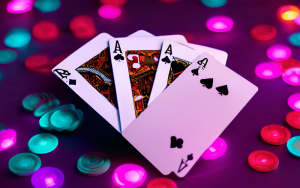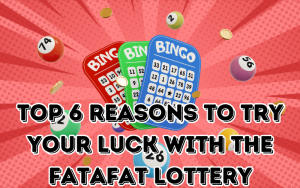Mega Rummy is a thrilling card game that combines elements of traditional Rummy with exciting twists. While luck plays a role, strategic gameplay can significantly increase your chances of winning. Here are some top secrets to boost your winning streak:
Master the Basics of Mega Rummy
Understanding the Mega Rummy Game:
- Familiarize yourself with the various rulesets of Mega Rummy, including the different scoring systems employed in each variation.
- Grasp the objective of the mega rummy game: to meld cards into sets (three or four of the same rank) and sequences (three or more consecutive cards of the same suit) while minimizing the value of your unmatched cards (deadwood).
Card Values:
- Memorize the point values assigned to each card. This knowledge is crucial for calculating your score and making informed decisions during gameplay.
Basic Strategies:
- Discarding High-Value Cards: Prioritize discarding high-value cards (Kings, Queens, Jacks) to minimize your potential penalty points.
- Forming Sets and Sequences: Focus on creating melds as quickly as possible to reduce your deadwood and increase your chances of winning.
- Minimizing Deadwood: Strive to discard or meld as many unmatched cards as possible to lower your overall score.
Develop Your Observation Skills
Effective observation can provide you with a significant edge in Mega Rummy. Here are two critical aspects to focus on:
Opponent’s Discard Pile
- Analyze Discards: Pay close attention to the cards your opponents discard. Each discarded card can offer insights into their strategy and the potential combinations they are aiming for. For instance, if an opponent discards several hearts, it may indicate they are not pursuing a flush or that they already have a strong hand without those cards.
- Identify Patterns: Over time, look for patterns in your opponents’ discarding habits. Some players may consistently hold onto certain cards, which can inform your decisions about what to keep or discard.
Opponent’s Draws
- Watch Draws Closely: Observe the cards your opponents draw from the deck. This information can help you anticipate their next moves and adjust your strategy accordingly. If an opponent draws a card that fits a sequence you suspect they are building, it may be time to change your approach.
- Gauge Their Needs: By tracking what your opponents pick up, you can better assess what they might be trying to achieve. This knowledge can guide your own discarding choices and help you block their potential winning combinations.
Practice Strategic Discarding

Discarding is as crucial as drawing in Mega Rummy. Making smart choices about what to discard can significantly influence the game’s outcome. Here are some strategies to consider:
Discarding High-Value Cards
- Get Rid of High Cards Early: High-value cards like Kings, Queens, and Jacks can be liabilities if left in your hand at the end of the mega rummy game. Discard them as soon as possible unless they are part of a strong combination you are building.
- Minimize Risk: By discarding high-value cards early, you reduce the risk of accumulating points if another player goes out.
Discarding Cards That Don’t Fit
- Evaluate Your Hand: Regularly assess your hand for cards that do not contribute to forming sets or sequences. If a card is unlikely to help you progress toward a winning hand, it’s best to let it go.
- Streamline Your Strategy: Keeping only those cards that align with your strategy will help you focus on building combinations more efficiently.
Bluffing
- Confuse Your Opponents: Occasionally discard cards that you might actually need. This tactic can mislead your opponents about your true intentions and hand strength.
- Create Uncertainty: By bluffing through strategic discards, you can keep your opponents guessing and potentially disrupt their plans.
Plan Your Moves
In Mega Rummy, effective planning is crucial to outsmart your opponents and enhance your chances of winning. By continuously scanning your hand, anticipating your opponents’ actions, and adapting your strategy to the mega rummy game flow, you can significantly improve your gameplay. Here’s a detailed look at how to plan your moves effectively.
Look for Opportunities
Continuously Scan Your Hand
- Identify Sets and Sequences: Regularly assess your hand for potential combinations. Look for opportunities to form sets (three or four cards of the same rank) and sequences (three or more consecutive cards of the same suit). Keeping your cards organized can help you visualize possible melds.
- Utilize the Discard Pile: The discard pile is a valuable resource. Pay attention to the cards being discarded by others, as they can provide insights into what combinations your opponents are pursuing. If you see cards that could complete a set or sequence for you, consider picking them up.
Maximize Your Options
- Stay Flexible: Maintain multiple pathways to victory by keeping various potential combinations in mind. This flexibility allows you to adapt as new cards are drawn or discarded.
- Prioritize High-Value Combinations: Focus on forming combinations that not only help you go out but also minimize points left in your hand if another player finishes first.
Anticipate Your Opponents’ Moves
Read Their Actions
- Observe Discarding Patterns: Keep track of the cards that your opponents pick up and discard. If they consistently pick certain suits or ranks, it may indicate what they are trying to build. This knowledge can inform your own decisions about which cards to keep or discard.
- Predict Their Needs: If an opponent draws a card that fits a sequence you suspect they are building, it may be time to change your approach. Understanding their strategy helps you plan counter-moves effectively.
Plan Counter-Moves
- Block Their Progress: If you believe an opponent is close to completing a set or sequence, consider discarding cards that could be useful to them. This defensive strategy can disrupt their plans and give you an advantage.
- Adjust Your Strategy: Be prepared to modify your approach based on what you observe from your opponents. If they seem focused on one suit, either compete for that suit or pivot to another.
Adapt to the Situation
Stay Flexible
- Adjust Based on Game Flow: The dynamics of Mega Rummy can change rapidly. Be ready to adapt your strategy based on the cards you draw, the actions of your opponents, and the overall pace of the game.
- Reassess Your Hand Regularly: As the game progresses, continuously evaluate your hand and the discard pile. What may have been a good combination earlier might no longer be viable as new cards enter play.
Embrace New Strategies
- Experiment with Different Approaches: Don’t hesitate to try new strategies as you gain experience. Each game presents unique challenges, so being open to adapting your tactics can lead to improved outcomes.
- Learn from Each Game: After each session, reflect on what worked well and what didn’t. Use these insights to refine your approach for future games.
Control Your Emotions
- Stay Calm: Avoid making impulsive decisions when you’re frustrated or losing.
- Focus on Your Game: Stay focused on the game and avoid distractions.
- Don’t Chase Losses: If you’re on a losing streak, take a break and come back later.
Conclusion
Mega Rummy is a game that requires a combination of skill, strategy, and a bit of luck. By mastering the basics, developing strong observation skills, and practicing strategic gameplay, you can significantly improve your chances of winning and enjoy a more rewarding gaming Rummy Game experience. Remember to play responsibly and have fun!







